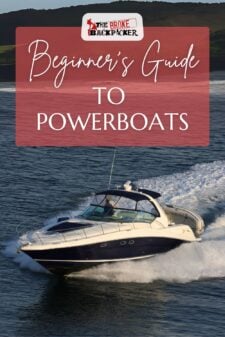The Broke Backpacker is supported by you. Clicking through our links may earn us a small affiliate commission, and that's what allows us to keep producing free content 🙂 Learn more.
Whether you dream of traveling on a powerboat while island hopping in the Caribbean, cruising the Mediterranean coast or exploring hidden waterways closer to home, the craft lets travelers turn the journey into an adventure. The sleek lines, the engine’s hum, the promise of open water and far-off horizons — it’s a ticket to freedom. Before you step aboard, it helps to know what you’re getting into.
You likely have some questions. How long does a powerboat last, what kind of upkeep can you expect and how much would that sweet customization you envision cost? Perhaps you’re considering an eco-friendly option like an electric powerboat.
This guide answers all your questions and shares practical details to help you quickly become an experienced boater.
- What Is a Powerboat?
- What Is the Average Lifespan of a Powerboat?
- Buying a Powerboat
- Life and Powerboating
- At a Glance — Powerboat Brand Comparison
- 7 Top Powerboat Brands to Know
- Safety Essentials When Boating
- Resale Value and Depreciation
- Renting Vs. Owning a Powerboat
- Beginner Tips for First-Time Buyers
- FAQ
- Final Thoughts
- Buy Us a Coffee!
What Is a Powerboat?
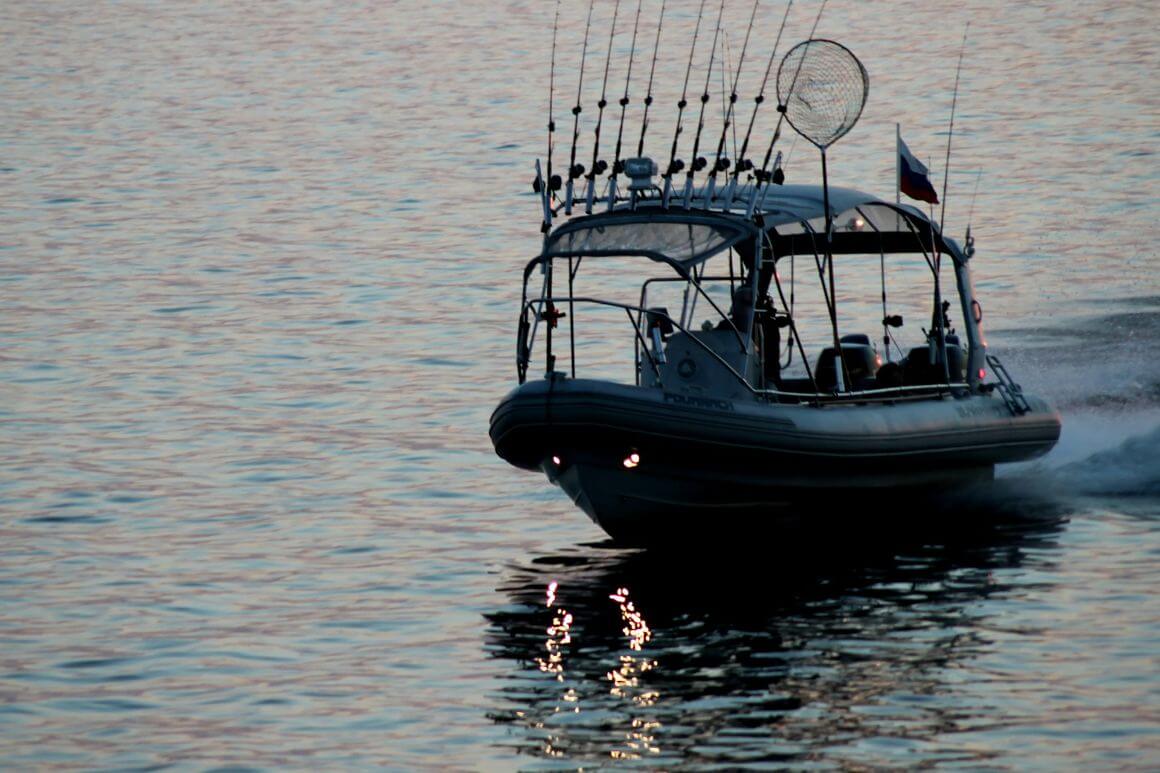
The Broke Backpacker is supported by you. Clicking through our links may earn us a small affiliate commission, and that's what allows us to keep producing free content 🙂 Learn more.
U.S. waters are busy, with over 11.6 million registered recreational craft, so you may wonder whether a boat you’re looking at is a powerboat vs motorboat. Simply put, any boat with an engine is a powerboat, but it can also be called a motorboat.
If a boat relies on the wind or human peddle or rowing action, it’s a different type of recreational craft. Powerboats can include runabouts, fishing boats, large cruisers and luxury yachts.
While people use “powerboat” and “motorboat” interchangeably, it’s not always the same. The first tends to be smaller and more maneuverable. The second type is usually larger, equipped with cabins, navigation stations and overnight facilities.
From an engineering perspective, powerboats are fascinating design feats. High-performance models employ advanced materials like carbon fiber and Kevlar, and leverage precise hydrodynamic engineering to slice through water with speed and stability.
Types of Powerboats
Motorized watercraft come in many shapes and sizes, each designed with a purpose. These are the most common you’ll see on the water.
Day Boats and Runabouts
These open-deck vessels are perfect for quick trips, water sports or casual cruising. They’re easy to handle, trailer-friendly and usually comfortably seat a handful of people. Because they’re designed for daytime use, dayboats lack cabins and sleeping quarters, making them best for short adventures near shore.
Cabin Cruisers
These striking vessels balance comfort and performance. They include small cabins with sleeping space, a galley and often a bathroom, making them suitable for weekend getaways or coastal cruising. Many travelers love them because they combine a manageable size with the amenities of a floating holiday home.
Fishing Powerboats
Avid open-water fishing enthusiasts love these boats, which feature sporty designs. Add-ons like rod holders, bait wells, and wide decks give anglers the space and stability to land the next big catch. These boats rule saltwater and freshwater with compact center consoles and larger offshore models.
Luxury Yachts
Yachts remain the pinnacle of leisure boating. They’re made for long-distance cruising in total comfort, with full kitchens, multiple cabins, lounges, and even pools or hot tubs. While yachts come with higher price tags, they offer the ultimate freedom to travel in style.
Electric Powerboats
If sustainability is your focus, an electric motor powerboat is appealing. Quiet, eco-friendly and efficient, these boats cater to travelers who want it all — a low carbon footprint and performance. While limited in range compared to traditional fuel engines, electric powerboats are quickly advancing and are already popular options for river and lake exploration and coastal skimming.
What Is the Average Lifespan of a Powerboat?
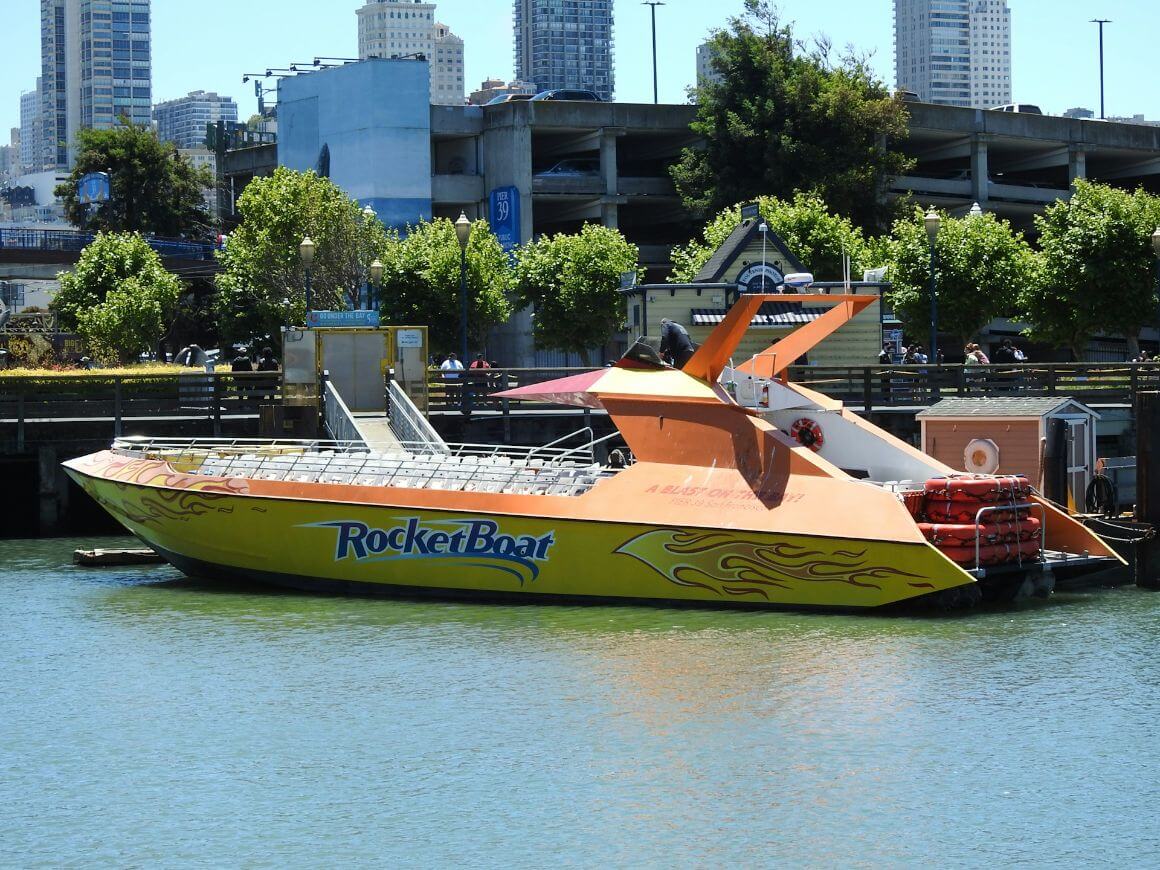
A well-cared-for aluminum hull powerboat can last 15 to 30 years, though some remain seaworthy for up to 100 years. Fiberglass and wood boats usually max out at 25 years, especially if they don’t get the proper care. So, exactly how old your boat will get depends on the type, how you use it and how diligent you are about maintenance.
Construction materials matter. While fiberglass hulls dominate designs and are generally durable, it only takes one submerged tree or log to really put a dent or hole in your day or hull.
Aluminum boats are favored for freshwater because of their longevity. Warm, salty water tends to cause more wear to boats than freshwater.
Wooden hulls are beautiful and authentic to the sport, but they require significant upkeep, and you’ll need frequent dry docking to sand and treat them. Steel boats are the titans of the sea but are heavy and require a larger motor to move them at top speeds.
The engine is another life-expectancy factor. How long a motor lasts depends on the fuel type, with gasoline engines clocking at 1,500 hours before requiring an overhaul. Diesel engines are more robust — a a high-quality model may offer up to 20,000 hours.
Since outboard motors are entirely external to the ship, they’re easier to service and may be much more affordable to maintain. In contrast, inboard motors are built into the hull, potentially making maintenance challenging and pricey.
Maintenance and Upkeep
Like your personal vehicle, a boat’s life depends on consistent maintenance. It requires engine flushing and servicing, cleaning the hull, applying anti-fouling coatings, checking electrical systems, and storing the boat correctly during the off-season. Basic care costs can reach $500 to $2,000 per year, not including repairs.
Winterization is an additional expense, but it helps prevent freeze damage in colder climates. With a few steps, you can protect your pride and joy and keep it reliable for decades, giving you more time to enjoy life on the water.
Buying a Powerboat
Purchasing a powerboat is as much about lifestyle as it is about performance. The right choice depends on your use, budget, travel goals and boating experience.
A Custom-Built Powerboat
Customization is how you put your personal stamp on your vessel so it perfectly matches your needs. Prices for custom constructions vary dramatically based on size, materials and features, with smaller builds more affordable than larger ones. Some options may include specialized hull shapes for performance and bespoke interiors for comfort.
While it’s more pricey than a standard model, personalized builds guarantee a boat that reflects your travel style and preferences. Quality manufacturers may have computer models to help you visualize your dream before determining a price tag.
New vs. Used Powerboats
Buying new offers peace of mind with warranties, the latest technology and pristine condition. New boats tend to hold their value longer if well-maintained, but they come with a higher price tag.
Used boats are more budget-friendly and often come with valuable upgrades by previous owners. Many first-time buyers choose used boats to gain experience without committing to the full cost of a new model. The trade-off is potential wear and tear, so inspections and sea trials are essential.
When choosing a used boat, it’s wise to take a more knowledgeable boater or service technician with you to check the engine compression, hull integrity, and whether the boat has been sunk or “swamped” before, which can create a string of challenges down the line. Certain models also have a history of poor quality or flaws, which you’d do well to avoid.
Electric Boating
The only difference when going electric is the motor runs off a battery instead of fuel. Electric boats are quieter, cleaner and often cost-effective to run. Current limitations include shorter ranges and longer charging times, but advances in battery technology are closing the gap.
An electric boat is an appealing alternative for eco-conscious travelers, especially for inland waterways and shorter coastal trips. While electric motors may not yet replace traditional cruisers for longer journeys, they represent the future of sustainable boating.
Life and Powerboating
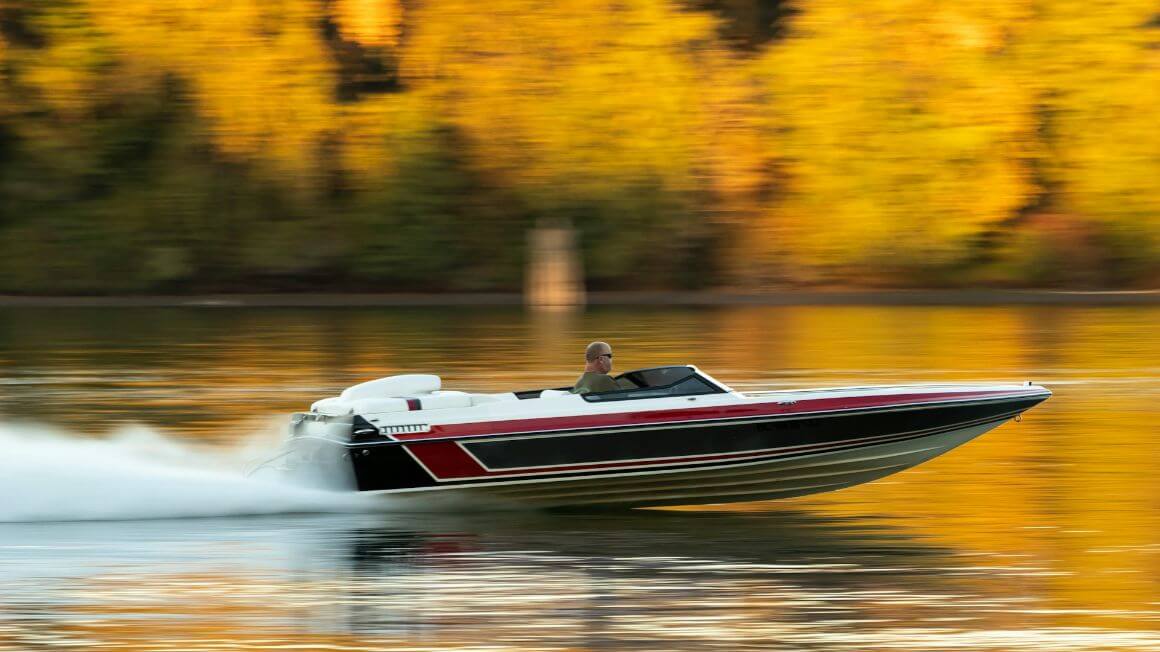
Owning or traveling on a powerboat isn’t just about getting from point A to point B — it’s a lifestyle that blends adventure, freedom and responsibility.
Destinations
Powerboats open up a world of travel opportunities. In the Caribbean, island hopping becomes second nature, while the Mediterranean offers endless coastal gems from Italy to Croatia. In the U.S., the Florida Keys and the Pacific Northwest are favorites for cruising.
Each destination brings its challenges — from navigation to docking — but the reward is access to places most travelers never see.
Comfort
Modern powerboats offer a broad spectrum of comfort. Day boats keep it simple with open decks and shaded seating, while cruisers and yachts feature cabins, galleys, and even entertainment systems. Travelers can choose between minimalism for quick trips or luxury for extended journeys.
Lifestyle
For many, a powerboat is a community. Marinas become social hubs, with like-minded travelers sharing tips and stories. The lifestyle can be as relaxed or adventurous as you make it, whether that’s a weekend fishing trip or months-long coastal cruising.
At a Glance — Powerboat Brand Comparison
With so many respected names in boating, narrowing down the best fit can be tricky. Each brand has its heritage, strengths and design philosophy that appeal to different types of travelers.
These are the top manufacturers at a glance, comparing their innovation and origin with price positioning so you can see at a glance which aligns with your goals on the water.
| Brand | Country of Origin | Best Known For | Price Range Positioning | Standout Innovation and Strength |
|---|---|---|---|---|
| Formula Boats | United States | Performance cruisers and crossovers | Premium | FormulaFlex™ customization program and hand-finished interiors |
| Bayliner | United States | Entry-level sport and family boats | Budget | Strong global dealer network and easy-to-maintain designs |
| Princess Yachts | Luxury motor yachts | Ultra-luxury | Hand-built interiors, vertical integration at historic Plymouth shipyards | |
| Sea Ray | United States | Sundancer cruisers, sport boats | Mid-to-premium | Pioneered fiberglass construction and strong global community |
| Grady-White | United States | Offshore fishing boats | Mid-to-premium | Patented SeaV²® hull for smoother offshore handling |
| Chaparral | United States | Sport and wakesurf boats | Mid-range | SURF Series technology with wakesurf capability and high resale warranties |
| Yamaha | Japan | Jet-powered sport boats | Mid-range | Helm Master joystick docking and efficient internal jet propulsion |
7 Top Powerboat Brands to Know
Choosing the right brand is just as important as choosing the right type of boat. Established builders bring proven performance, reliable warranties and resale strength, giving buyers confidence that their investment will stand the test of time. These are some of the most respected names in the powerboating world.
1. Formula Boats
Formula Boats blends performance-driven engineering with luxury craftsmanship. Headquartered in Decatur, Indiana, the family-owned enterprise has upheld over 60 years of attention to detail and innovation under the Porter family’s leadership.
The FormulaFlex™ program lets buyers customize graphics, surfaces, upholstery and electronics with MyWay™ options for fully bespoke design choices. The company’s Super Sport Crossover models marry form and function, featuring convertible cockpits, LED lighting, wet bars, and luxurious finishes such as Corian accents and stainless hardware.
Formula’s quality system includes marine-grade 316L stainless railings, corrosion-resistant wiring and thorough endurance testing to ensure longevity on the water.
Key Features
- FormulaFlex™ customization program, including MyWay™ bespoke options
- Sleek, convertible cockpit designs with LED lighting and luxury touches
- Marine-grade hardware and corrosion-resistant electrical systems
- Corecell™ hullsides for increased shear resistance of larger hulls
- Award-winning FAS³TECH® hull designs and performance legacy
2. Bayliner
Bayliner stands out as one of the most widely accessible powerboat makers, offering affordability without compromising basic functionality. Designed with simplicity in mind, these boats appeal to first-time buyers and those looking for straightforward handling and low-maintenance design.
The product lineup features versatile watersports, cruising and fishing models. With a strong dealer network and readily available parts, Bayliner ensures reliability and new owner support at accessible price points.
Key Features
- Cost-effective entry-level pricing for budget-conscious buyers
- User-friendly controls ideal for beginners
- A diverse selection of models — bowriders, deck boats and cruisers
- Wide dealer network and easy access to parts and service
- Emphasis on simplicity and low barrier to ownership
3. Princess Yachts
Princess Yachts has earned its reputation as a leading British luxury yacht builder with a deep maritime heritage. Its shipyards occupy over 1 million square feet and build around 200 motor yachts annually, including prestigious S, V, F, X and Y classes, combining British craftsmanship with sophisticated design engineering.
Princess is poised for renewed growth thanks to corporate reinvestment and stability. Its yachts are celebrated for handcrafted interiors, seaworthiness and tailored performance — traits reflecting origins steeped in naval and Plymouth tradition.
Key Features
- A range of super flybridges and sport yachts in various classes
- Over 1 million sq ft of integrated manufacturing space in Plymouth
- Strong maritime craftsmanship and vertical integration
- Hand-built interiors with timeless British design
- Hybrid design and energy-saving technologies
4. Sea Ray
Founded in 1959 in Detroit, Sea Ray is an iconic American powerboat maker and a core company within Brunswick Boat Group. It broke ground with fiberglass boat construction and remains celebrated for its Sundancer, SLX, SDX and SPX series, spanning sport boats, cruisers and cabin models.
Sea Ray emphasizes elegant styling, meticulous craftsmanship and smooth performance, supported globally by a network of dealers, an industry-leading warranty and an engaged owners’ community.
Key Features
- Pioneer in fiberglass recreational boats
- Diverse model lines: Sundancer cruisers, SLX, SDX, SPX
- Inspired design, quality finish and seamless performance
- Broad global dealer network and 24/7 support
- Engaged owners’ club and loyalty community
5. Grady-White
Since 1959 in Greenville, North Carolina, Grady-White has built a strong legacy in coastal fishing boats. The Smith family has owned it since 1968, establishing its reputation for uncompromising detail, safety and riding comfort.
It’s best known for the patented SeaV²® hull, which was engineered for superior offshore stability and a soft ride — hallmarks that appeal to anglers and families alike. These boats range from 18 to 45 feet, including center-console, walkaround and express-cabin models.
Key Features
- Unique patented features like fold-down cockpit steps and seating
- High customer satisfaction ratings
- Rugged yet refined fishing and family-boat designs
- Built in Greenville, NC, with attention to owner feedback
- Broad range includes center-console, dual-console, express cabins
6. Chaparral Boats
Chaparral Boats blends innovation with craftsmanship. The company’s production space spans over 1 million square feet, where skilled multi-generational crafters build sportboats, luxury sportboats and wakesurf models by hand. It was founded in 1965 in Fort Lauderdale and has been based in Nashville, Georgia, since 1976.
The brand’s lineup includes SSi/SSX sportboats, OSX luxury sportboats and SURF Series boats. They consistently earn awards — more than 60 industry recognitions, including multiple “Boat of the Year” titles.
Key Features
- Sport, luxury sport and wakesurfable SURF models
- Lifetime limited hull and 5-year component warranties on 2025 models
- Hand-built American craftsmanship with a multi-generational team
- Build your boat customization
- Affordable up-front pricing on the SSI, SSI outboard and SURF models
7. Yamaha Motor Corporation
Yamaha Motor Corporation’s marine division is a powerhouse in jet-powered boating. With over 65 years of experience in marine engine development, its products are renowned for reliability, durability and performance. The patented internal jet-propulsion delivers efficient acceleration, minimal draft and smooth planning — perfect for shallow waters and sleek performance.
The 2025 Yamaha 255 FSH Sport H exemplifies brand innovation — jet drive with Helm Master® EX joystick control enables precision docking and maneuvering even for newcomers. It hits 54 mph and cruises efficiently, offering features like propeller-free sterns to avoid hazards and simple handling.
Key Features
- Jet-drive propulsion with quick planing and shallow-water capability
- Legendary engine reliability and marine heritage
- Helm Master® EX joystick control for intuitive docking
- High power-to-weight ratio with efficient cruising fuel use
- Pioneering designs tailored to modern boating needs
Safety Essentials When Boating
Safety is at the heart of every great boating experience. Before heading out, ensure your vessel meets all legal requirements for registration, licensing and insurance in your region.
Every powerboat should carry a core set of safety gear. Life jackets for every passenger, fire extinguishers, flares and a first-aid kit are nonnegotiable. Navigation lights, radios and updated charts also prepare you for changing conditions.
Training is another key factor. Many countries require at least a basic boating license or certificate, and completing a hands-on safety course builds confidence. Insurance is equally important as it protects your boat and the people on board.
With preparation, you’ll enjoy peace of mind while exploring open water.
Resale Value and Depreciation
Like cars, powerboats depreciate the moment they leave the showroom. Most boats lose value within the first few years, but depreciation slows as long as the vessel is well cared for. For tax purposes, boats have a five- to seven-year depreciation rate.
Factors that protect resale value include strong brand reputation, meticulous maintenance records, and desirable features like updated electronics or fuel-efficient engines. High-quality builders such as Formula, Sea Ray and Grady-White often retain value better than entry-level brands.
Buyers looking at resale should also consider market demand — popular models and sizes tend to hold their worth longer. Selling at the right time — ideally after major servicing — can maximize return on investment.
Renting Vs. Owning a Powerboat
Buying a powerboat offers freedom and pride of ownership, but it comes with ongoing responsibilities like docking fees, insurance, maintenance and storage. Ownership pays off for frequent boaters who often use their vessels because the boat available for spontaneous trips and longer cruises.
Renting or chartering is wise for travelers who only get out on the water occasionally. Rental companies and peer-to-peer platforms give access to a wide range of boats without the long-term expenses. It’s also a way to test different models before buying.
Ultimately, the decision hinges on usage. If you’ll spend fewer than 15-20 days a year on the water, renting may be the more economical choice.
Beginner Tips for First-Time Buyers
It’s exciting to buy your first powerboat, but watch out for hidden costs and practical considerations.
Start by setting a realistic build budget that includes the purchase price, insurance, docking, storage and yearly maintenance. Boats require ongoing care, and those expenses can add up quickly.
Next, think carefully about how you’ll use the boat. A day cruiser may be perfect for local watersports, while a cabin cruiser makes more sense for weekend travel. Always test-drive before buying to get a feel for handling, comfort and layout.
When considering used boats, hire a marine surveyor to inspect the vessel and its engine. Minor issues can become expensive surprises, so professional oversight is worth the cost.
Don’t underestimate the value of a strong dealer or manufacturer relationship. Brands with wide service networks make ownership easier for newcomers.
Finally, start small and work your way up. Owning a powerboat is a learning experience. Your first boat doesn’t have to be your forever boat. By beginning with a manageable size and gaining confidence on the water, you’ll know when to upgrade to something larger or more specialized.
FAQ
Final Thoughts
Powerboats float a lifestyle of adventure, whether you’re chasing coastal sunsets, exploring new destinations or simply enjoying weekends on the water. With the proper care, they can last decades and deliver countless memorable journeys.
Costs vary, but the freedom and experiences are priceless. Whether looking at traditional cruisers or electric innovations, starting with a trusted name ensures you’re investing in quality, performance and a vessel built for exploration.
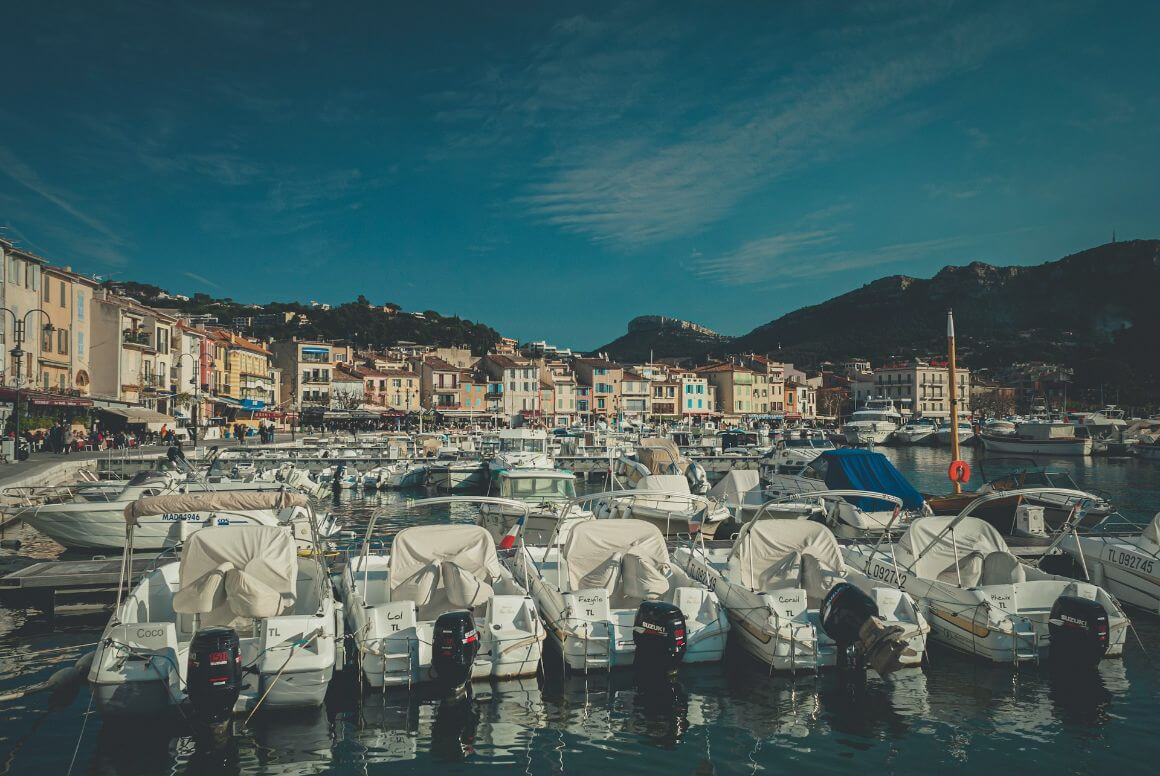
Buy Us a Coffee!
A couple of you lovely readers suggested we set up a tip jar for direct support as an alternative to booking through our links, since we’ve decided to keep the site ad-free. So here it is!
You can now buy The Broke Backpacker a coffee. If you like and use our content to plan your trips, it’s a much appreciated way to show appreciation 🙂




